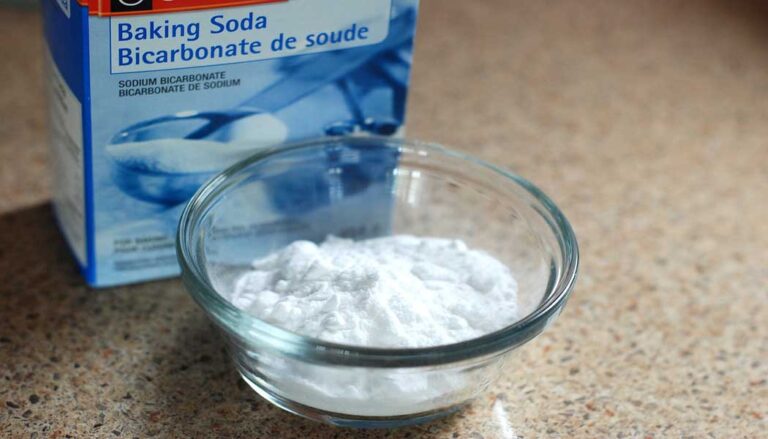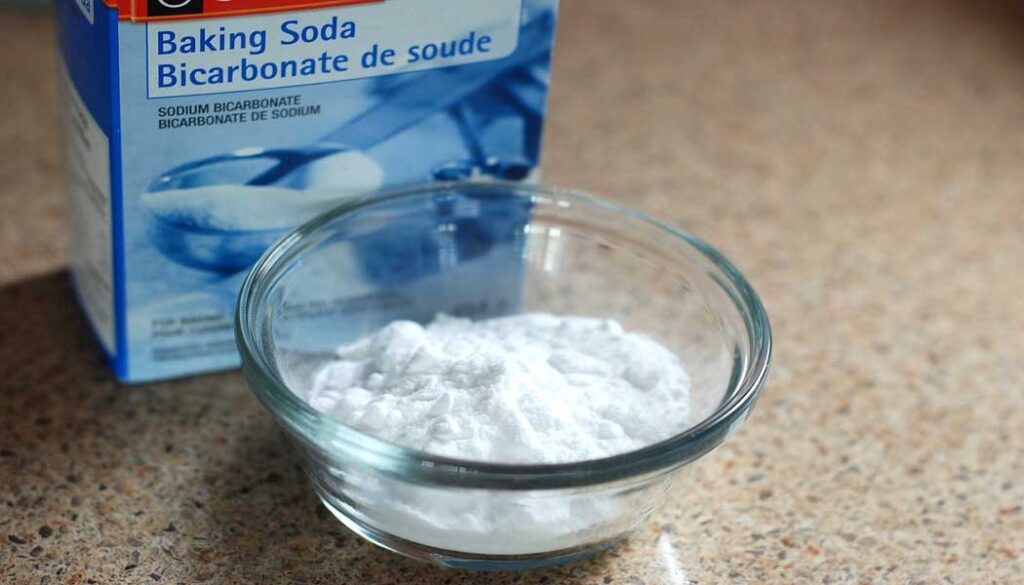
Will Baking Soda Damage Car Paint?
Baking soda is abrasive and can potentially scratch car paint if not used correctly. It’s essential to dilute it in water and apply it gently to minimize any potential damage.
Every car owner knows the joy of a gleaming, spotless vehicle – the envy of the neighborhood. But in the quest for automotive perfection, the question inevitably arises: can baking soda do more harm than good?

In the world of automotive care, myths and misconceptions abound. In this article, we embark on a journey to unravel the truth behind the enigma of baking soda and its potential impact on your car’s pristine paint job. Buckle up as we navigate the twists and turns of this oft-debated topic, ensuring you have the knowledge you need to keep your car looking its absolute best.
Will Baking Soda Damage Car Paint?
The question of whether baking soda will damage car paint is a common concern among car owners who seek cost-effective ways to maintain the appearance of their vehicles.
Baking soda is scientifically known as sodium bicarbonate. It is a versatile household item known for its cleaning and abrasive properties. While it can be a useful tool in cleaning various surfaces, including cars, there are important factors to consider when using baking soda on car paint.
Baking soda’s abrasive nature is a double-edged sword. On one hand, it can effectively remove surface contaminants like dirt, grime, and even some light stains. On the other hand, its abrasive particles can potentially harm the car’s paint finish if not used correctly.
The key to safely using baking soda on car paint lies in proper technique and precautions. In essence, while baking soda can be safe and effective for cleaning car paint when used correctly, there is a risk of damage if precautions aren’t taken. It’s important for car owners to exercise caution, adhere to best practices, and conduct small tests to determine the suitability of baking soda for their specific car’s paint.
Ultimately, the choice of using baking soda for car paint maintenance depends on an individual’s willingness to follow proper procedures and their commitment to regular car care. When used with care, baking soda can be a useful addition to a car owner’s toolkit for maintaining the appearance of their vehicle.
How to Identify If Baking Soda Has Harmed Car Paint?
Identifying whether baking soda has harmed your car’s paint is crucial to taking appropriate corrective actions promptly. Here are some steps to help you determine if baking soda has had a detrimental effect on your car’s paint.
1. Inspect the Paint Surface: Begin by closely examining the entire surface of your car’s paint. Look for any noticeable changes in the paint’s appearance, such as dull spots, discoloration, or scratches.
2. Feel for Texture Changes: Run your fingers gently over the painted surface. If you notice any roughness, unevenness, or textural changes that weren’t there before using baking soda, it could be a sign of damage.
3. Check for Swirl Marks: Swirl marks may appear as fine, circular scratches on the paint’s surface. Use a strong light source and inspect the paint from various angles to detect these marks.
4. Examine Edges and Joints: Pay special attention to the edges of panels and joints between different parts of the car. These areas are more susceptible to damage, and any signs of harm may be more pronounced there.
5. Compare to Untreated Areas: Test baking soda on a small, inconspicuous area of your car before using it more broadly. Then compare that area to the surrounding untreated paint. If you see a noticeable difference, it could indicate damage.
6. Consult a Professional: If you are unsure about the condition of your car’s paint or suspect damage, it’s advisable to consult a professional auto detailer or body shop. They can assess the paint’s condition and recommend appropriate measures to rectify any harm.
Remember that prevention is the best approach when it comes to maintaining your car’s paint. To minimize the risk of damage, always use baking soda sparingly, dilute it properly, apply it gently, and follow up with thorough rinsing and waxing to protect the paint. Regular maintenance and care can help preserve your car’s appearance and minimize the chances of any harm caused by baking soda.
How Do You Use Baking Soda on Car Paint Safely?
Using baking soda on car paint can be a safe and effective cleaning method when done correctly. Here’s how to use baking soda on car paint safely:
Mix baking soda with water to create a paste or a mild cleaning solution. This dilution reduces its abrasive properties, making it safer for the paint. Apply the baking soda mixture gently using a soft microfiber cloth or sponge. Avoid using abrasive materials like steel wool or scrub brushes.
Before applying baking soda to the entire car, it’s advisable to test it on a small, inconspicuous area. This test helps ensure that the baking soda doesn’t cause any adverse effects, such as scratching or dulling of the paint.
After cleaning with baking soda, rinse the car thoroughly with clean water to remove any residue. Residue left on the paint could potentially harm the finish over time. To restore the shine and protect the paint, consider applying a quality car wax or polish after cleaning.
By following these steps, you can safely use baking soda to clean your car’s paint without causing damage.
Steps to Take if Car Paint Damage Is Suspected
If you suspect that baking soda or any other cleaning method has caused damage to your car’s paint, here are the steps to take:
- Stop Using the Suspected Cleaner: Discontinue the use of any cleaning agent that you suspect has caused damage to your car’s paint to prevent further harm.
- Inspect the Damage: Carefully examine the affected areas. Look for changes in the paint’s appearance, such as scratches, discoloration, or texture changes.
- Consult a Professional: If the damage is significant or if you’re uncertain about how to address it, consult a professional auto detailer or body shop. They can assess the extent of the damage and recommend appropriate corrective measures.
- Consider Repairs: Depending on the severity of the damage, repairs may be necessary. This could involve paint touch-ups, polishing, or even repainting the affected areas.
- Learn from the Experience: Use the incident as an opportunity to learn about proper car care techniques and products. Understanding how to prevent similar damage in the future is essential.
Should I Leave Baking Soda in My Car?
Leaving an open container of baking soda in your car can be a useful way to help absorb odors and moisture. Baking soda is known for its odor-neutralizing properties, and it can help reduce musty or unpleasant smells in your car. Additionally, it can absorb excess moisture, which can be beneficial for preventing mold and mildew growth. However, there are a few things to keep in mind.
Place the baking soda in a container or a small, breathable bag to prevent it from spilling or creating a mess in your car. Baking soda can lose its effectiveness over time. Replace it periodically, perhaps every few months, to ensure it continues to absorb odors and moisture effectively.
Check the container regularly to ensure that the baking soda hasn’t spilled or created a mess in your car.
While baking soda can help manage odors, it’s essential to address the root cause of any persistent smells in your car, such as cleaning up spills or addressing any underlying issues.
In summary, leaving baking soda in your car can be a practical way to manage odors and moisture, but it should be used in a controlled manner and periodically replaced for maximum effectiveness.
Learn How to Use Baking Soda on Car Paint:
Final Words
The question of whether baking soda will damage car paint boils down to one’s approach and diligence in its application. Baking soda, with its mild abrasive properties, can be a valuable tool for car owners seeking cost-effective cleaning solutions.
However, it can pose a risk to the paint’s finish if not used carefully. In the end, while baking soda can be a useful addition to your car cleaning toolkit, it’s essential to use it judiciously and follow best practices to ensure that your vehicle’s paint remains in top condition.
